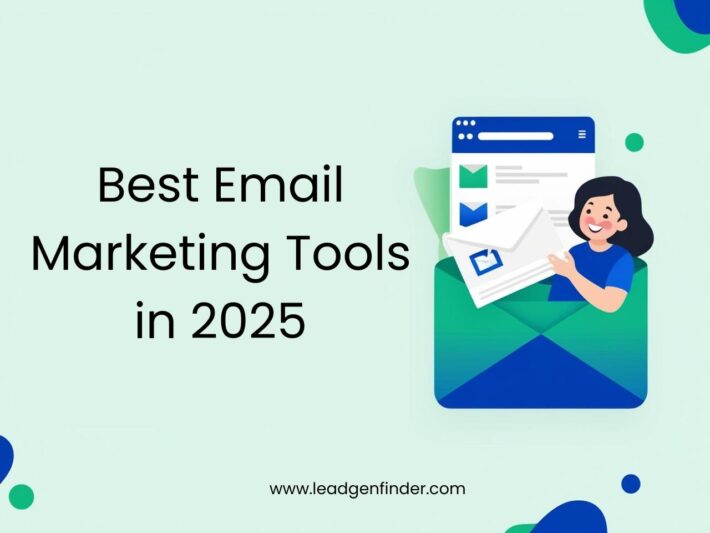The Ultimate Cold Email Guide 2025: Get Replies Fast

Cold email guide 2025. Learn proven strategies, subject lines, tools, and tips to boost open rates and get real replies — no fluff, just results.
Table of Contents
What is Cold Email?
Cold emails are messages you send to people or businesses who might be interested in what you offer. They’re not yet familiar with you or your business. And your goal is to convince them to make a purchasing decision.
But in 2025, cold email has changed, and it has become more powerful than ever. Now we can do things that were impossible in the past. Now we can find the right people and send them messages that feel personal, even to a lot of people at once.
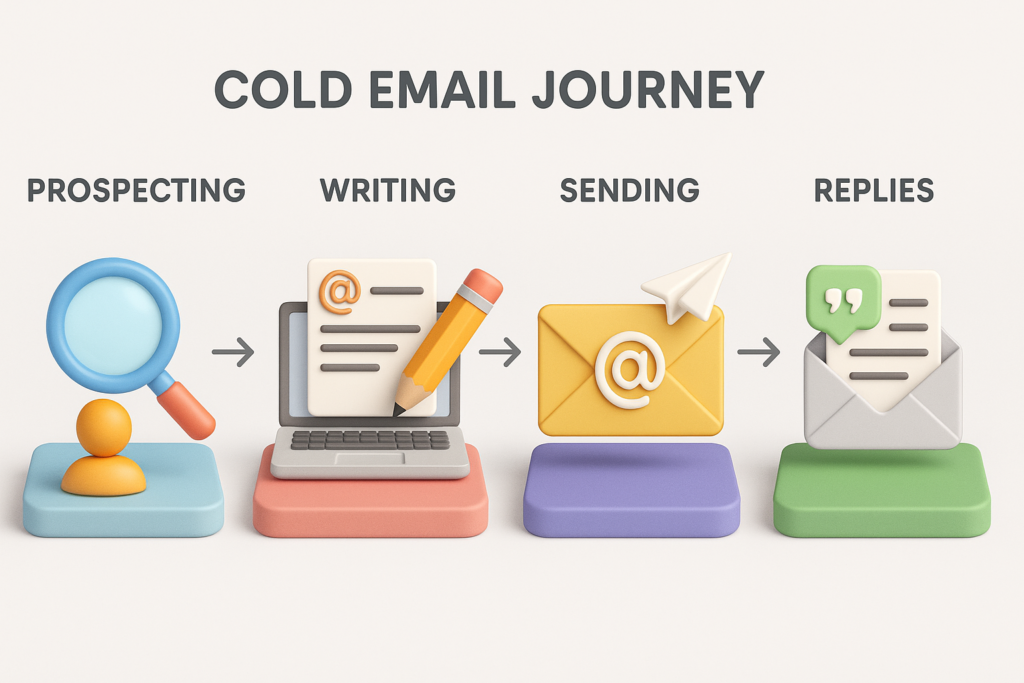
Difference Between Email Marketing and Cold Email.
Now, you might think that cold email and email marketing are the same, but trust me, they’re NOT.
Cold email is way different and more advanced than email marketing. Let me explain:
The major difference between these two is relationship building. Email marketing is for people who gave their email because they want to get deals, news, or updates from you. These emails are basically promotional emails.
On the other hand, cold emails help you connect with new people who might become your clients one day.
Email Marketing
- It is used to keep subscribers engaged and promote offers.
- This targets a large number of email lists.
- It has visuals like images and videos with strong CTAs.
- This involves sending bulk emails to people who’ve opted in.
- Platforms like Mailchimp and HubSpot are mostly used for this.
Cold Emailing
- This is used in outreach to start chats and close deals.
- It targets small and specific groups.
- It uses short, personalized, and relevant content with very little or no media.
- Starts slow and grows over time.
- Tools like Saleshandy, Instantly, Apollo, and Mailshake are mostly used for cold emailing.
How to Write Cold Emails?
It’s hard to write a cold email that actually gets a response. Anyone can write an email. But writing one that feels personal, makes people curious, and gets them to reply — that’s not so easy.
It’s not about telling them how great you are or sending long sales pitches. It’s about helping and giving real value that they care about. That’s how real conversations start.
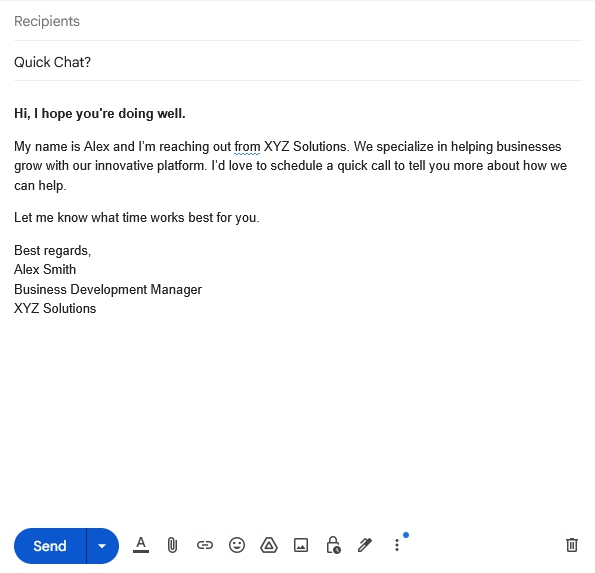
Cold emails don’t work when they’re unclear, have bad grammar, don’t explain the offer well, or don’t say what to do next. These things can kill a cold email.
What you should do instead
- Start with a relevant intro (something personalized about the prospect).
- Highlight a real, specific pain point that the prospect is facing.
- Show how your product/service can solve that pain.
- Add a clear CTA (ask for a meeting or schedule a call).
- Follow up consistently (3 to 4 times max).
Generic Cold Email vs. Personalized Cold Email.
When we’re talking about cold emails, there are basically 2 types.
- Generic cold email
- Personalized cold email
Generic cold emails are used by everyone. They are boring, look like spam, and are ignored 99% of the time.

A personalized cold email includes the prospect’s name, company, pain point, and how you can help.
Talking about their company, a recent success, or a problem you can fix makes the email feel real and helpful. It also makes them want to reply.
How to write a personalized cold email?
Making cold emails personal is hard. Many people get stuck. But I can help you do it easily.
I’ll be breaking down this whole process into 6 easy steps; just follow along:
1. Do the Research (30–60 seconds max)
- Look at their LinkedIn, website, or recent posts.
- Then, see what service you can give and if they need it.
- Only focus on solving their pain. That’s it.
2. Write a Personalized First Line
- Make it obvious that this email is only for them, not a mass-sent.
- Mention something specific (e.g., Congrats on the recent product launch.)
3. Highlight the Problem or Opportunity
- Show that you care for them and you understand a challenge they might be facing.
- Example: Many SaaS teams I talk to have trouble turning trial users into paying customers.
4. Introduce Your Solution to that Problem
- Briefly explain how you help solve that problem.
- Don’t push for the hard sell; just try to help.
- Example: I help SaaS teams create onboarding steps that get more people to pay after their trial by over 20%.
5. Add Social Proof (must add)
- Mention a quick win or past result. (This builds trust.)
- Example: Just helped [Client Name] improve their onboarding and saw a 28% bump in conversions.
6. Add an easy CTA.
- Do NOT pressure. Just make it easy to reply.
- Example: Does it make sense to connect for a quick call next week?
✅ Bonus Tips:
- Quick Formula: [Personal line] + [Problem] + [Solution] + [Proof] + [CTA]
- Keep it under 120 words.
- Don’t add any buzzwords or long intros.
- Use a clear subject line (e.g., “Quick idea for [company name]”)
How to Write Subject Lines for a Cold Email?
Your subject line matters more than everything else. These are THE most crucial part of an email.
This part decides whether the reader will open your email or not. So it’s very important to optimize your subject line.
Here are 5 subject line rules that make cold emails stand out:
1. Keep it short (3–7 words max).
- Most businessmen are busy. They won’t read everything; they just scan subject lines, so shorter = better.
- Example: “Quick idea for [Company]”
2. Make it relevant, not salesy.
- Avoid using “Buy now” or “Limited offer” type phrases. Try to sound helpful or curious.
- Example: “Noticed this on your site…”
3. Personalize it.
- Use the company name, industry, or a reference.
- Example: “Hiring struggles at [Company]”
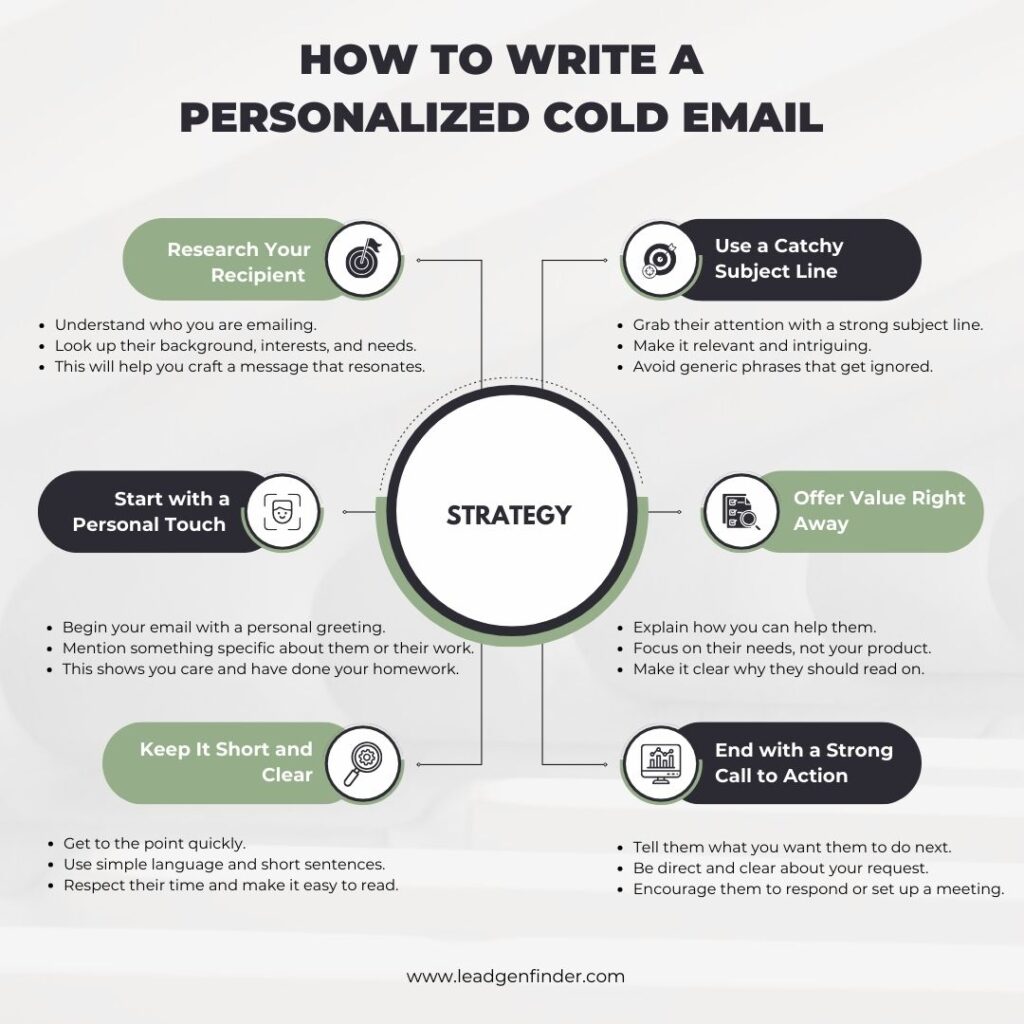
4. Spark curiosity
- Catch their interest so they open the email just to see what it’s about.
- Example: “You might be missing this…”
5. Be as human as possible.
- Avoid uppercase, buzzwords, or over-formatting.
- Just use a casual tone of voice.
- Example: “Saw this and thought of you,” “Quick question, [First Name].”
How to Increase Email Open Rates?
Email open rates mostly depend on 3 core areas: subject line, timing, and sender trust.
If these 3 are done properly, you will get a high email open rate. Here’s a full breakdown:
1. Write Irresistible Subject Lines:
- Keep it short (under 7 words).
- Personalize with names or company info.
- Spark curiosity; don’t try to sell.
2. Personalize the Preview Text
- People do look at that little preview after the subject line, so make it count.
- Example: “Congrats on your latest hire — saw something you might like…”
3. Always Use a Real Name & Email Address
- People open emails from real humans.
- Example: From: subroto@leadgenfinder
4. Send Email at the Right Time
- Follow your prospect’s time zone.
- The best times to send cold emails are between 8 AM and 10 AM, mostly on weekdays, or in the late afternoon, around 3 to 5 PM.
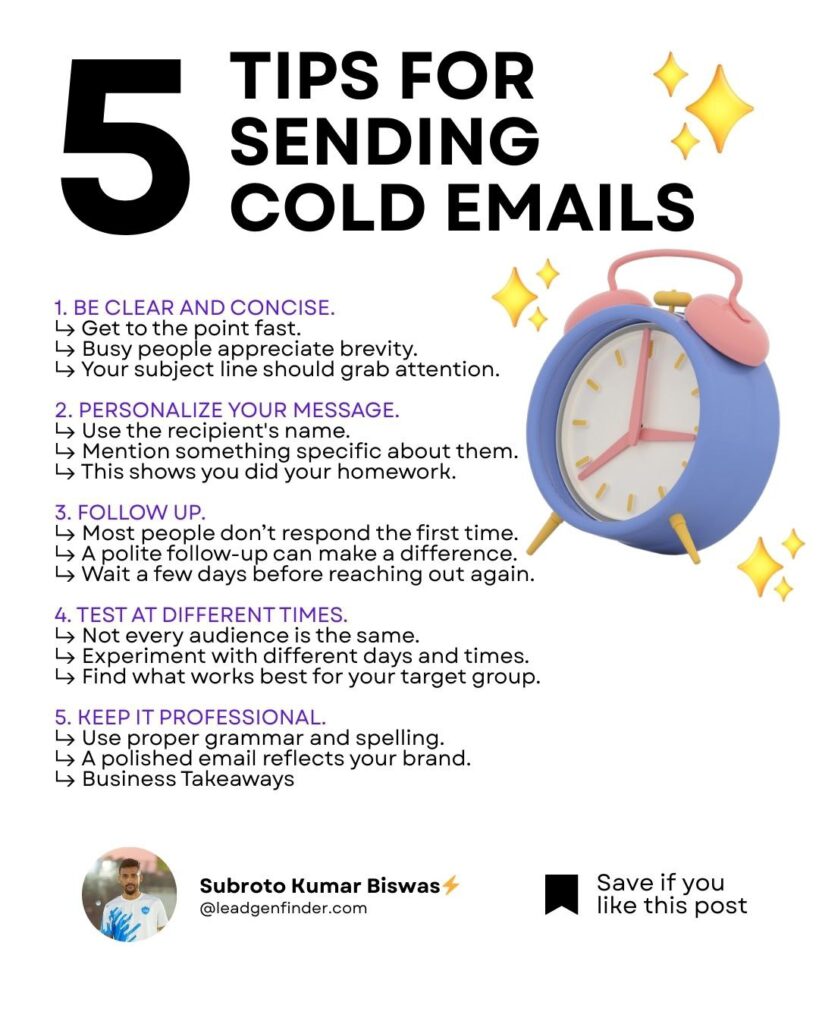
5. Never Use Spammy Language
- Words like “free,” “buy now,” “guaranteed,” or excessive punctuation (!!!) trigger spam filters.
6. Warm Up Your Domain Before Campaign
- If it’s a new email domain, warm it up first.
- Slowly increase sending volume to build trust.
7. Use Email Deliverability Tools
- Check your spam score and set up proper DNS records (SPF, DKIM, DMARC).
- Use tools like MailerLite, Instantly, ReachInbox, etc.
✅ Bonus: Clean Your List Regularly
- Use tools like MillionVerifier or NeverBounce to remove bad or fake emails.
- A clean list = higher deliverability.
Conclusion
Cold email is not dead. It does work; you just have to do things the right way.
Forget boring templates or mass blasts and start solving real problems. Write like you talk, keep your message short, and end with one clear CTA (call to action).
A good subject line plus clear value is what brings replies. That’s it.
If you need help with your cold emails, feel free to DM me or drop a comment. Happy to help.
